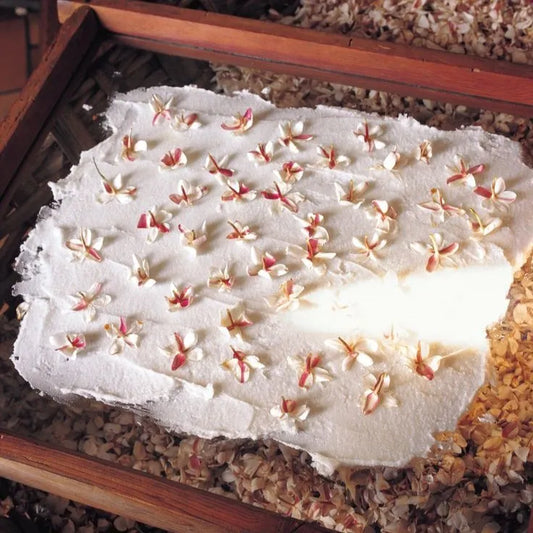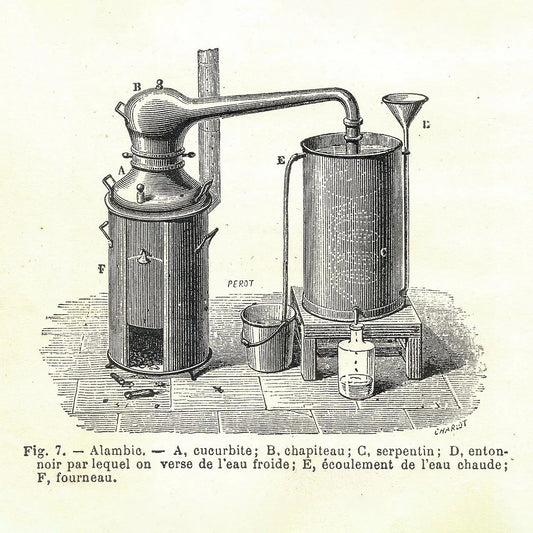Plants were part of healers’ earliest apothecary, probably long before the development of written language made it possible to catalogue each plant’s purpose. As the practice of distillation did not emerge until it was discovered by Avicenna around 1000 CE, people collected plants with strong scents for a wide range of uses, from bringing comfort to the sick to masking the smell of a dead body until it could be buried. The Old Testament of the Judeo-Christian Bible provides instructions for using specific plants to consecrate temples and altars (see How are essential oils used in religious practice?), thousands of years before alchemists began distilling their essences.
Around 4500 BC, records indicate that ancient Egyptians soaked aromatic plants in oils (most likely olive, given the fruit’s prevalence in the region) and used the resulting scented oil in ointments, salves, and poultices. Myrrh, grapes, onion, anise, and cedar all provided strong scents and apparent medicinal benefits, so these became staples in an Egyptian physician’s apothecary. The first mentions of scented oils in Chinese and Indian medicine took place sometimes between 3000 and 2000 BC, with more than 700 substances mentioned in aged texts that survived to the modern era. This staggering list includes sandalwood, cinnamon, ginger, and myrrh, some of today’s most popular essential oils.
Sometime around 1800 BC, a cadre of Roman and Greek physicians traveled to Egypt to learn from that country’s renowned physicians, who not only practiced medicine but also recorded their successes and failures for the common good. One of the tools these early doctors espoused was the use of plant material and essences for specific ailments, some mixed with carrier oils or used in making preparations to apply to patients’ bodies. The Greek and Roman physicians brought this information back to their own territories, and the oils became part of the Greek medical tradition. Greek physicians embraced cumin, marjoram, peppermint, saffron, and thyme for their perceived medical properties, as their records noted for the first time between 500 and 400 BC. The Romans, however, lost or forgot their own knowledge of scented plants and their use in healing when the Roman empire fell between 376 and 476 CE.
Centuries passed before the knowledge of plant essences and their ability to heal would re-emerge, spurred forward by Persian-born Avicenna’s method for capturing plant scents and flavors in liquid form through distillation. The Arabs took the next step, becoming the first to ferment sugar and distill ethyl alcohol from it. This new substance turned out to be a better solvent for extracting plant essences than oils were, making the essences more accessible to alchemists in the 1200s. By this time, Marco Polo made his famed journey to Asia and brought back spices including cardamon, cinnamon, nutmeg, and sage, to the delight of merchants—and to physicians, who began to experiment to determine if these new spices and herbs had any use in treating disease and wounds.
Medicine moved slowly in the age before modern laboratories, so the next solid mention of precursors to essential oils came in the 1500s in Europe, when the list of oils included benzoin, calamus, cedarwood, cinnamon, costus, myrrh, rose, rosemary, sage, and turpentine. A Swiss physician, Paracelsus, became a thought leader in the use of these oils for medicinal purposes, pushing other physicians and alchemists to work to extract plant essences from leaves, roots, and wood or bark as well as from stalks.
By the 1700s, as many as 100 different essential oils were now part of a pharmacist’s stock. What medicinal value these oils actually have still remains to be seen three centuries later, but chemists in many different fields undertook the task of determining each oil’s chemical composition. This opened the door for the use of these oils in a wide range of applications, from perfume to food flavoring.
In 1937, French chemist Rene Gattefosse published Aromatherapy, a book about the use of inhalation of the vapor from scented oils to treat diseases. His evidence of this technique’s effectiveness turned out to be largely anecdotal or based on a small number of cases, but just as books touting miraculous quick-fix cures top the bestseller lists today, Gattefosse’s theories gained traction and popularity. Aromatherapy remained a European phenomenon until the early 1980s, when Jean Valnet, a French physician, published his own book, The Practice of Aromatherapy. This one crossed the ocean and received attention in the United States, refreshing and advancing the essential oils industry here.
The twentieth century saw another platform emerge: essential oils as home remedies for everything from hangnail to asthma, as well as their use in cleaning products. When aromatherapy became popular, essential oils entered the mainstream to become a multi-billion-dollar business with many growers, bottlers, packagers, and marketing companies making them easily available to the general public.





